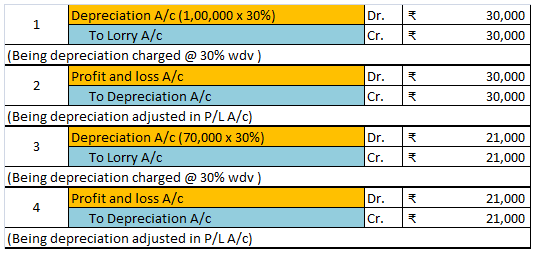The correct answer is 4. Revenue Expenditure. Depreciation is a non-cash expense and is charged on the fixed asset for its continuous use. Revenue expenditure is a day-to-day expense incurred by a firm in order to carry on its normal business. Depreciation is considered a revenue expense due to theRead more
The correct answer is 4. Revenue Expenditure.
Depreciation is a non-cash expense and is charged on the fixed asset for its continuous use. Revenue expenditure is a day-to-day expense incurred by a firm in order to carry on its normal business. Depreciation is considered a revenue expense due to the regular use of the fixed assets.
Depreciation is the systematic and periodic reduction in the cost of a fixed asset. It is a non-cash expense. Mostly, depreciation is charged according to the straight-line method or written down method as per the policy of the company.
Depreciation is the systematic and periodic reduction in the cost of a fixed asset. It is a non-cash expense. Mostly, depreciation is charged according to the straight-line method or written down method as per the policy of the company. It is calculated as-
Depreciation = Cost of the asset – Scrap value / Expected life of the asset.
For Example, ONGC bought machinery at the beginning of the year for Rs 10,00,000
It charges depreciation @10% at the end of the year.
10,00,000 x 10/100 = 1,00,000 will be depreciation for the year and will be shown on the debit side of Profit & Loss A/c.

As the fixed assets are used in the day-to-day activities of the firm and hence the depreciation charged on it on the daily basis would be revenue in nature. so depreciation is said to be an item of revenue expenditure.
See less







Buildings S.No. Particulars Rate 1 Buildings which are used mainly for residential purposes except hotels and boarding houses. 5% 2 Buildings other than those used mainly for residential purposes and not covered by sub-items (1) above and (3) below. 10% 3 Buildings acquired on or after the 1st day oRead more
See less